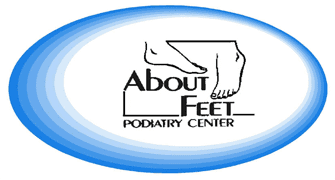
Bunions: Diagnosis, Treatment & Recovery with Foot & Ankle Experts
Bunions (hallux valgus) are common foot deformities. That bump and misalignment at the base of your big toe can worsen over time, causing pain, shoe-fit issues, and gait changes. At About Feet Podiatry Center, we focus exclusively on foot and ankle care. We see bunions every day — you get expertise, not guesswork.
Why you should see us before anyone else
- We live in the foot and ankle world — no juggling other joints.
- Shorter wait and a direct path — get seen quickly and start care.
- Integrated diagnosis and treatment — imaging, analysis, non-surgical care, and surgery under one roof.
What is a bunion
A bunion forms when the big toe drifts toward the second toe, making the joint protrude outward. Over time, the joint misaligns, cartilage wears, and neighboring toes and joints compensate.
What you might feel
- A bump or protrusion at the base of the big toe
- Pain, swelling, redness, or inflammation
- Difficulty fitting into shoes
- Corns, calluses, or rubbing at the shoe
- Shifting of other toes
- Changes in walking pattern or toe pressure
It is rarely just cosmetic — bunions often lead to functional problems if ignored.
Our bunion treatment approach
We assess where you are in the bunion progression and tailor care — no one-size-fits-all plans.
Conservative (non-surgical) care
- Proper shoe fitting with wide toe boxes and supportive soles
- Padding, bunion shields, and toe spacers
- Custom orthotics to reduce stress on the joint
- Stretching, strengthening, and gait correction
- Activity changes and pressure-relieving modifications
If symptoms persist despite conservative care, we discuss procedural or surgical options.
Surgical and procedural options
- Minimally invasive bunion surgery using percutaneous techniques
- Open reconstructive procedures such as osteotomies, realignment, and soft-tissue balancing
- Joint fixation or fusion for severe or arthritic bunions
- Corrective procedures for nearby toes if secondary deformities exist
Many procedures can be performed in our in-office surgical suites. Some surgeries require less recovery time than expected and permit early weight-bearing under safe protocols. Depending on the procedure, sedation is not always required, making recovery simpler.
We review each option’s risks, benefits, and recovery timeline so you can choose what fits your goals and lifestyle.
When you should contact us
- Persistent pain even with supportive shoes
- Worsening toe angulation or shifting
- Development of calluses, corns, or overlapping toes
- Difficulty walking or increased foot fatigue
- Desire to prevent long-term joint damage or arthritis
Delaying care can worsen the deformity, make surgery more complex, or reduce options.
Start better bunion care today
We will evaluate how your bunion affects your foot, explain the cause, offer both conservative and surgical paths, and guide your recovery and long-term foot health.
📞 Call (610) 524-3338
Insurance plans accepted
Please call our office if you do not see your plan listed.

